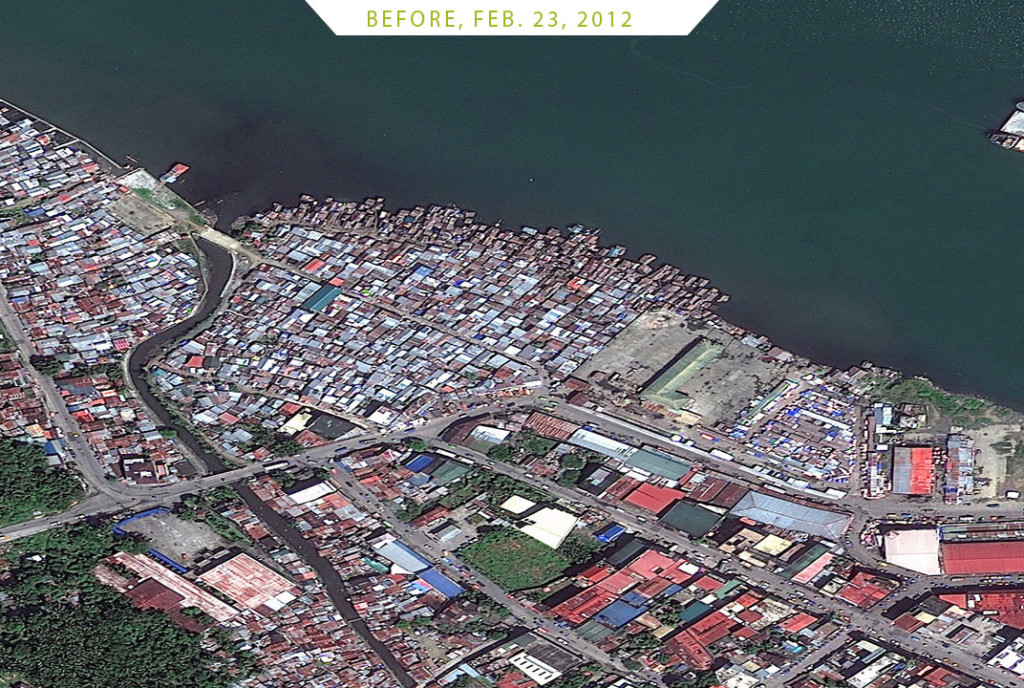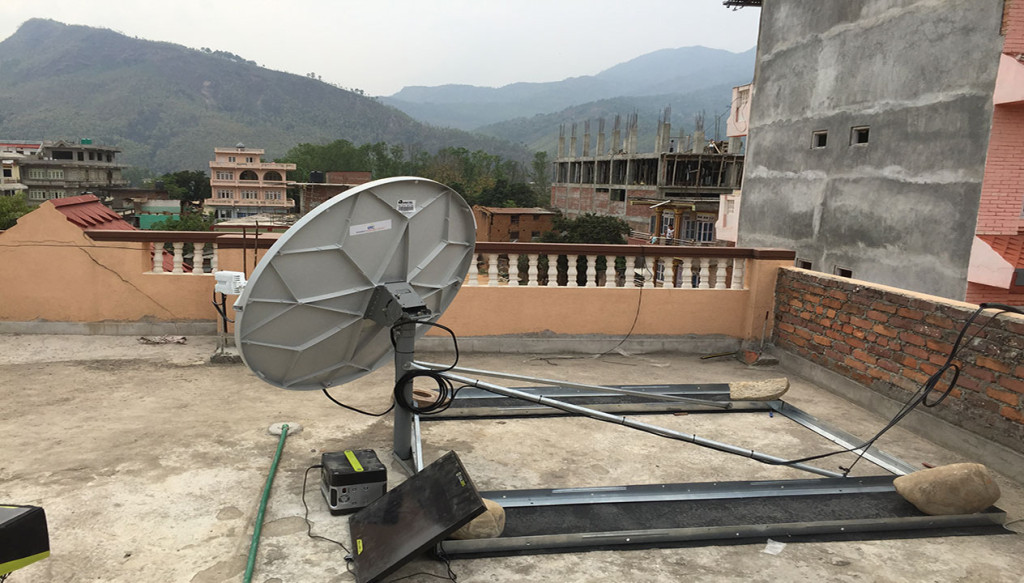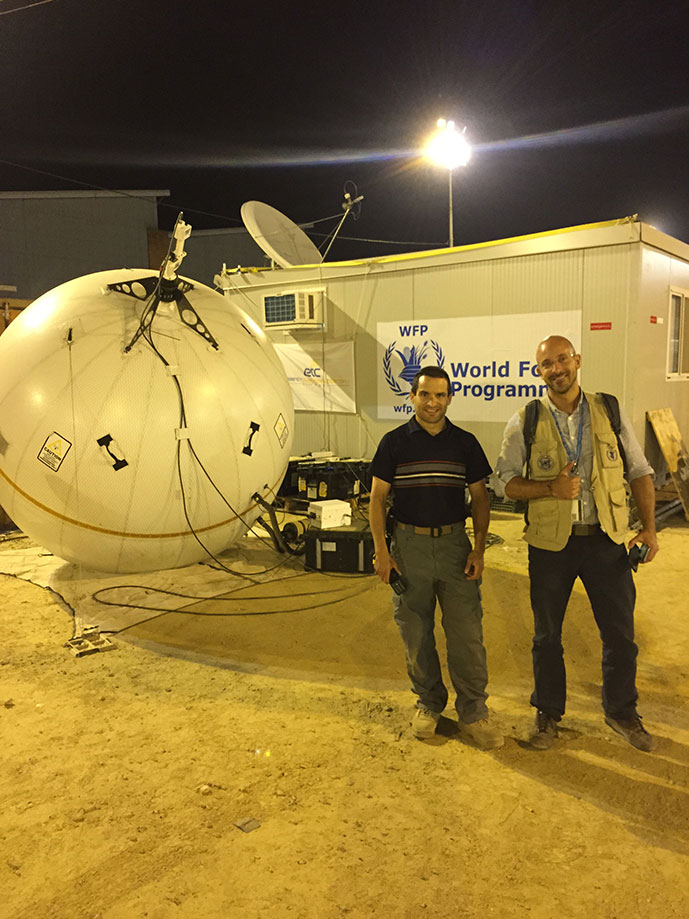 Executive Interview with Steve Birnbaum
Executive Interview with Steve Birnbaum
Some disasters disappear from headlines before they ever have a chance to be noticed. Others can survive at least one 24-hour news cycle. It is easy to recall the coverage of the Haiti earthquake or Typhoon Haiyan, but Cyclone Pam’s damage to Vanuatu was not as noticed.
The more visible a disaster has been in the media, the easier it can be for humanitarian response organizations and their partners to obtain donated resources to support the response. However, there is a limit to any organization’s ability to help with in-kind or cash donations. The point at which that limit is reached is typically referred to as “donor fatigue.” The global commercial satellite communications and Earth observations industries are not immune to this challenge. Addressing this challenge was one of the objectives that Steve Birnbaum set out to address in the aftermath of the Haiti earthquake in 2010.
From that time until earlier this year, Mr. Birnbaum led this effort in collaboration with the Global VSAT Forum (GVF). Steve continues to lead it, now an independent initiative with the support and participation of leading satellite operators, equipment manufacturers and service providers from around the world. Some of the participating companies include Intelsat, SES, ABS, Globecomm and Ultisat.
During the response to the earthquake in Haiti, many of the hundreds of NGOs that deployed asked numerous satellite communications (SatCom) companies individually for assistance to Haiti. Not wanting to deny resources that can be of help, the companies readily donated millions of dollars of equipment, service and even personnel who were flown to Haiti to support the installation and operation of the equipment.

FIGURE 1.
Ebola response, courtesy of Gisli Olafsson, NetHope
The companies that provided this assistance were proud to do so, but the high cost of this support in some cases exhausted the budgets these companies had at their disposal to help. When floods impacted Pakistan several months later, many of the same organizations that had rushed to help in Haiti had exhausted their available resources and could not help again so soon.
Steve worked with the SatCom industry to address this challenge in a number of ways.
First, as was recently described in this publication in the Spring 2015 issue, GVF acted to provide coordination across the SatCom industry, and between them and the humanitarian response community. This allowed for a dramatic increase in the efficiency and effectiveness of the communications assistance provided to the international response community.


FIGURE 2-3.
Typhoon Haiyan, in Tacloban, Philippines, courtesy of DigitalGlobe Before image: Feb. 23, 2012 After image: Nov. 10, 2013
Rather than stove-piping resources, this approach took a wide view of the needs of the response community. Humanitarian response organizations are often located near to each other, or even within the same compounds. In the past, each one may have sought out the donation of a VSAT terminal, for example. That is no longer the case.
With the coordination in place, all requests can be collected in one place. The organizers then look at the “big picture,” and work with the vast array of resources that our members offer to find a solution that best solves the “big picture” needs. In most cases, that comes at a significantly lower cost than a multitude of individual solutions. It also does not delay the response, and can often speed it up. Since Steve has worked closely with the humanitarian community for many years as a partner and within the Emergency Telecommunications Cluster (ECT), they have the ben- efit of experience and familiarity with what all parties can offer to find the most suitable solutions.
There is a hidden benefit to this. By reducing the complexity or the scale of the resources needed from the SatCom industry, the cost to that same community is also reduced. That means that companies are better able to support multiple responses over time. Something that is not needed for a particular response can be kept ready for the next one. They have demonstrated the benefits of this approach in the response to the Japanese earthquake, Typhoon Haiyan in the Philippines, the Ebola crisis in West Africa, Cyclone Pam in Vanuatu, and the recent earthquake in Nepal.
TYPHOON HAIYAN
Typhoon Haiyan began to impact the Philippines on November 6, 2013. As the initial damage assessments started to come out of the country, the humanitarian response community recognized that this would require a significant response effort. The Emergency Telecommunications Cluster began to seek available resources. Also apparent early on was that many of the organizations would be located close to each other.
Tacloban was a major base of operations. Steve began to put together a solution with participating companies. SES, one of the two largest global satellite operators, had available capacity. Speedcast, a large service provider, offered to provide the connectivity service using its iDirect equipment. AsiaSat, the operator of the teleport where that equipment was located, re-pointed the antenna and provided the teleport services. iDirect ensured that Speedcast had the resources they needed.

FIGURES 4.
Nepal Response, courtesy of Steve Birnbaum
Within a mere 36 hours, a new VSAT (very small aperture terminal) service had been put together that would be offered exclusively to the humanitarian response community. It was on a very powerful satellite that enabled use of small antennas, which reduced the logistics challenge of moving them to and within the country. Making this service available using a single solution meant that resources were used efficiently. It also meant that
organizations could move VSAT terminals around, knowing that they were all going to be compatible. It also meant that many other companies that had stepped forward to offer services could be asked to keep those in reserve for the next time.
But that wasn’t enough. The response to Typhoon Haiyan would last a long time, and there is no way that these companies could offer the donated service for free indefinitely. They could certainly do so for the initial emergency response period, but what then?
There was a perception among some in the SatCom industry that the global humanitarian community asked for donations and was almost never willing to pay for service. Company leaders, who have a fiduciary duty to shareholders, sometimes expressed the sentiment that it would be easier to donate services during an emergency if there were a possibility that they might see revenue at some point in the future. That is not to say that they wanted to make a donation with any strings attached, but simply that it can be easier to justify why money was spent on a donated service if at some point in the future the recipient organization would purchase a product or service. In practical terms, it meant that support for the donated resources might come from marketing budgets rather than only corporate social responsibility (CSR) funding.
The three companies that were providing the service after Haiyan were asked for how long they could provide it at no cost to the humanitarian community. The answer was three months. That represented a donation of well over $250,000 in in-kind services. Knowing from the outset that it would be available for three months also benefited the humanitarian
community, as it set appropriate expectations. There would be no last-minute surprises.
But more importantly, the three companies also agreed that it could be made available beyond the three months on a commercial basis, and nominated one of the three to be the commercial interface with the humanitarian community. This had never been attempted before on this scale.
As the response progressed, some ETC members began to plan ahead. NetHope, a member-based NGO that focuses on ICT (information and communications technology) solutions, negotiated terms for continuity on a commercial basis directly with the companies involved. There was no obligation to do so, of course. There was no requirement to continue paying for service as a stipulation for the donation. That would never be acceptable for ethical reasons.
Rather, it created the opportunity for NetHope and others to continue to use the service if it met their needs. By the end of the three months, most NGOs will have successfully led fundraising campaigns. They will often then have the means they may not have had in the early aftermath of a disaster to allocate funding for communications services, and they will not be under the pressure of the early response.
Typhoon Haiyan marked the first time such a coordinated SatCom response effort was transitioned to commercial service during a disaster response.
EBOLA IN WEST AFRICA
In 2014, the world watched with deep apprehension as Ebola took many lives in West Africa and caused panic around the world. UN agencies and NGOs launched their response efforts. A SatCom company extended an offer to donate equipment and service to NetHope for a period of six months. Over the next several months, the terminals were deployed to many locations throughout the three affected countries of Sierra Leone, Guinea and Liberia.
“Typhoon Haiyan marked the first time such a coordinated SatCom response effort was transitioned to commercial service during a disaster response.”
As the months progressed, NetHope had ample time to identify an authorized dealer of the service in Africa, and to develop a relationship with them. As the six month deadline approached, many of the sites that had been operating on the donated service were transitioned to commercial service. Other sites, which no longer needed connectivity, were decommissioned. This provided the humanitarian community with continuity, and a smooth transition. They could make decisions based on available budget, and without the pressure of an emergency situation.
CHARTING THE FUTURE
It is important to note that at no time were the companies guaranteed any revenue until a commercial agreement was signed. Since Mr. Birnbaum was operating within the Emergency Telecommunications Cluster, he was able to work with both the humanitarian community and satellite companies to ensure that the services and the subsequent transition was a trans- parent process that adhered to humanitarian ethics and principles.

FIGURES 5.
Nepal Response, image courtesy of Steve Birnbaum, on left, with UN aid worker
These two responses demonstrate that a transition to commercial service is indeed possible, providing that the process is transparent from the start. There can be no strings attached to a donation, but humanitarian response organizations understand that a donation cannot be indefinite. They are willing to work with the private sector to find a solution that meets everyone’s needs.
The ability to prove that a transition commercial service is possible can now be used by companies to justify future in-kind or cash donations in support of humanitarian response. This has created a better partnership, with a better understanding of the needs and limitations of everyone involved.
With increased collaboration across the industry, guided by neutral parties, it is possible to create new models for private sector support of humanitarian response. These new models are more sustainable, and treat both the private sector companies and NGOs as equal partners in developing solutions to save lives.
Looking ahead, Steve plans to build on past successes. He is working on improving the predictability of responses by developing solutions in advance for high-risk regions, which is consistent with the United Nations and others, whose efforts are now focused more on disaster readiness than response. There is a global cadre of GVF-certified VSAT installers. While they have been called upon in the past to aid response organizations, Mr. Birnbaum’s hope is that they can be further developed as a resource through additional training specific to disaster response.
We have seen the industry advance significantly from the type of ad-hoc response to Haiti in 2010 to the types of coordinated responses we have seen in 2015. It has been said for years that communication saves lives, but with the advent of social media use of geospatial intelligence resources in the field, that has never been truer. It is therefore important that the global satellite communications industry always works to improve the means of ensuring the rapid delivery of effective and sustainable communications solutions following a disaster.


